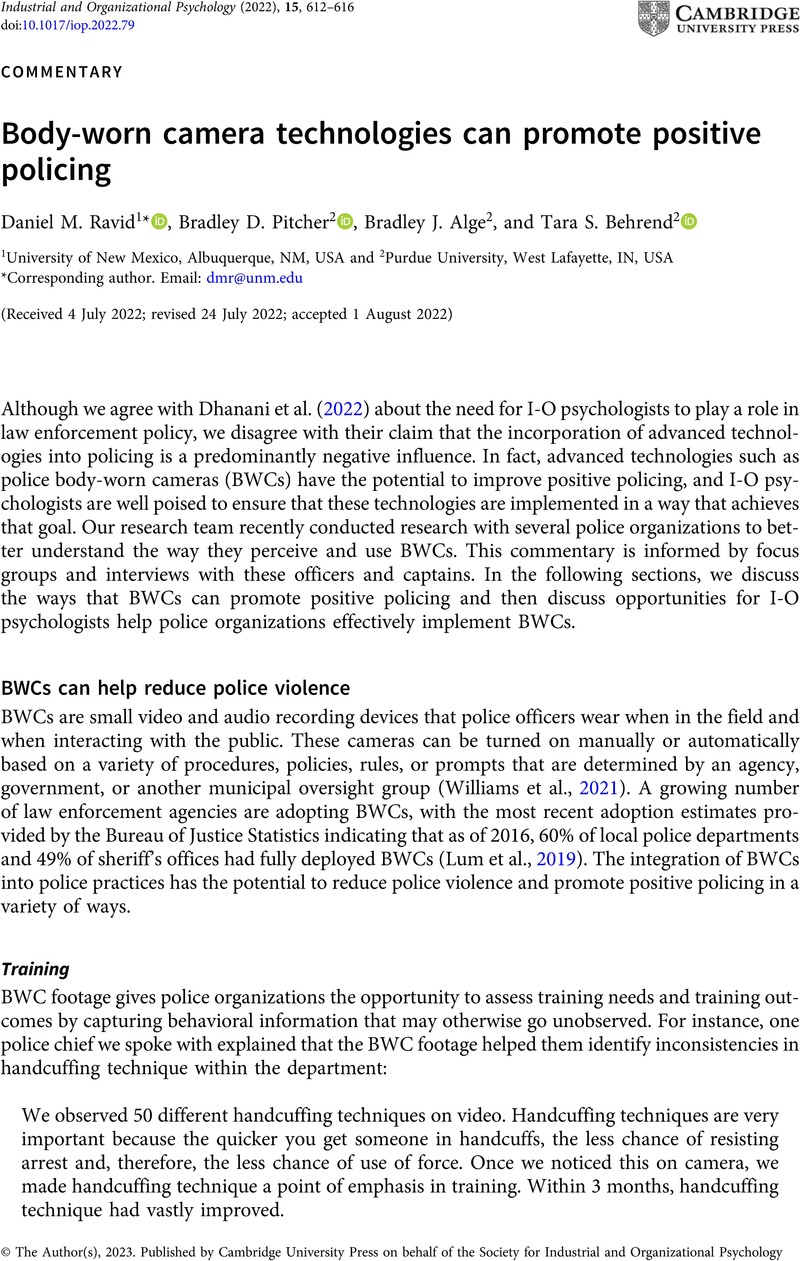Crossref Citations
This article has been cited by the following publications. This list is generated based on data provided by Crossref.
Guadayo Cueme, Joel
2024.
Eyes on the Truth: Assessing the Use of the Body-Worn Cameras in South Cotabato Provincial Police Office.
International Journal of Innovative Science and Research Technology (IJISRT),
p.
1826.



